Introduction: What’s Behind Hair Loss and How Can You Fix It?
Let’s face it: losing hair can be pretty disheartening. Whether you’re noticing a few extra strands in your brush or feeling the slow creep of a receding hairline, it’s something almost everyone deals with at some point. Stress, genetics, ageing—there are a ton of reasons why your hair might start thinning. But don’t panic. There are solutions out there.
One that’s getting a lot of attention lately is PRP (Platelet-Rich Plasma) therapy. It’s a non-invasive treatment that uses your blood to stimulate hair growth. Best PRP Hair Treatment in Islamabad, Pakistan But how does it stack up against other treatments like medications or hair transplants? In this blog, we’ll take a look at what PRP is, how it works, and why it is the best choice for you.
What is PRP Hair Treatment?
Alright, so here’s the lowdown on PRP. It’s a treatment that starts with a simple blood draw (don’t worry, it’s not as scary as it sounds). They take a small sample of your blood, spin it in a centrifuge to separate the platelets, and then inject that concentrated platelet-rich plasma (hence the name) back into your scalp. The idea is that the platelets, packed with growth factors, can stimulate your hair follicles and help them start producing stronger, healthier hair.
It’s a natural process. Since the treatment uses your blood, the risk of reactions or side effects is low. 5 Myths About PRP Hair Treatment You Should Ignore There are no chemicals or medications—just your body doing its thing.
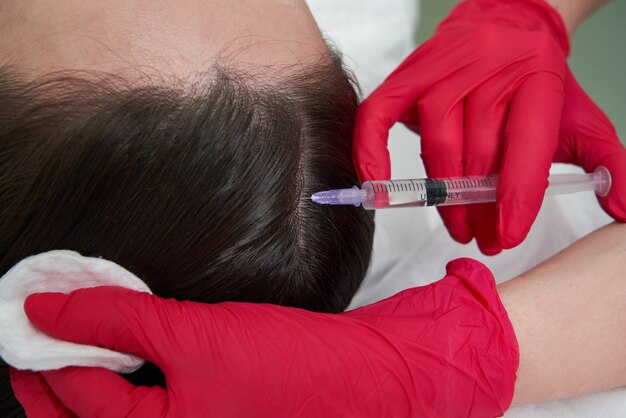
How PRP Helps Your Hair Grow Back
So, how exactly does PRP work its magic? Well, the growth factors in PRP stimulate your hair follicles. They wake up the dormant ones and encourage them to grow new hair. Key Benefits of PRP Hair Treatment for Hair Loss Think of it as giving your scalp a little “jumpstart.” Plus, the platelets help improve blood flow to the hair follicles, making sure they’re getting the nutrients they need to thrive.
Here are a few of the ways PRP works its charm:
- It improves blood flow to the scalp, keeping follicles nourished and healthy.
- Stimulates inactive follicles to start producing new hair.
- Reduces inflammation, which can actually slow down hair growth.
- It helps existing hair grow stronger and thicker over time.
Since it’s a natural process, you’re not putting harsh chemicals on your scalp. Your body is doing the hard work!
PRP vs. Other Hair Loss Treatments
When it comes to treating hair loss, there’s no one-size-fits-all. But let’s break down how PRP compares to a couple of other popular treatments.
Oral Medications (Minoxidil and Finasteride)
You’ve probably heard of Minoxidil (Rogaine) and Finasteride (Propecia). These are the go-to medications for hair loss. The problem? Well, they come with side effects. Minoxidil can cause some scalp irritation, and Finasteride is known for messing with hormones (we’re talking about things like reduced libido, which… yeah, no thanks).
Another thing to consider is that these medications require ongoing use. If you stop, your hair loss could pick up right where it left off—not exactly the long-term solution some people are looking for.
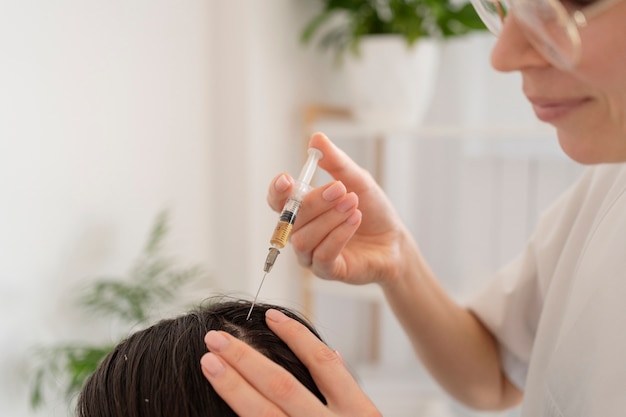
Hair Transplants
Hair transplants are heavy artillery when it comes to hair restoration. This is where they actually move hair follicles from one part of your scalp to a thinning area. It’s a more permanent solution than medications, but it comes with its own set of challenges. For one, it’s invasive—meaning you’ll need to recover from surgery. The procedure is expensive, too.
PRP Therapy
Now, here’s where PRP shines. It’s a middle ground. It’s non-invasive, so no surgery is required. It’s also relatively affordable compared to hair transplants. And unlike medications, you don’t have to keep using them forever to maintain results. With PRP, you’re getting a more natural treatment without the need for chemicals or daily pills.
So, if you’re after something non-surgical and low-risk, PRP is definitely worth considering.
Why Choose PRP? The Benefits Explained
Let’s explore the real reasons PRP might be the best option for you. Some key benefits make it stand out in the world of hair loss treatments.
Natural and Non-Invasive
One of the best things about PRP is that it’s all-natural. It uses your blood—no foreign substances or chemicals are involved. That means a much lower risk of side effects or complications. Plus, it’s non-invasive. There are no needles or scalpels—just a quick blood draw and a few injections.
Quick Recovery Time
When you get PRP done, there’s minimal downtime. After your treatment, you may notice some slight redness or swelling at the injection sites, but that usually goes away quickly. You don’t have to worry about taking weeks off from work or dealing with a lengthy recovery period as you would with a hair transplant.

Minimal Risk of Side Effects
PRP therapy has a very low risk of side effects. Since it uses your blood, it’s doubtful that your body will reject it. The most you’ll probably experience is some mild bruising or swelling at the injection points, which disappears pretty fast—no weird chemicals or hormones to mess with your system.
Long-Lasting Results
Here’s the kicker: PRP offers long-lasting results. Once your hair starts growing back, you don’t need to keep up with constant treatments. You may need occasional touch-ups, but for the most part, it’s a one-and-done solution. In contrast, medications require you to keep taking them to maintain results, or your hair loss will pick up again.
Works for Different Types of Hair Loss
PRP isn’t just for one type of hair loss. It works for various types, including androgenic alopecia (pattern baldness), thinning hair, and even hair loss caused by stress. If you’re in the early stages of hair loss, PRP can give your follicles the boost they need to start growing again. But if your follicles are gone, it might not be as effective.
How Effective Is PRP for Hair Regrowth?
Now, let’s talk results. PRP is effective, but it does take a little time. Most people see some improvement within 3-6 months, but full results can take up to a year. The exact time frame varies depending on the individual.
PRP works best for those with early to moderate hair loss. If your hair loss is more advanced or you have fully bald spots, PRP might not be as effective. But if you catch it early enough, PRP can make a noticeable difference in the thickness and health of your hair.
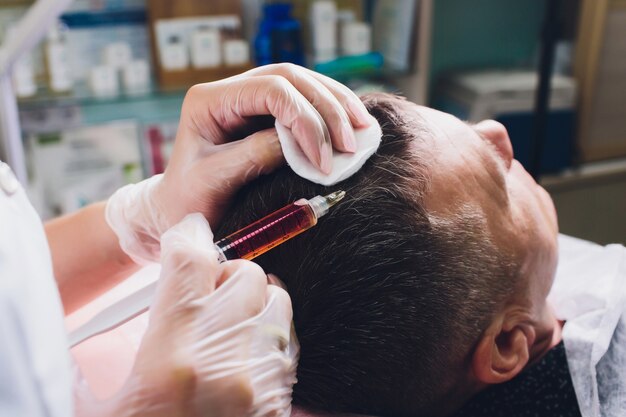
What Happens During a PRP Hair Treatment?
Here’s what you can expect during a PRP session:
- Blood Draw: Don’t worry, it’s just a quick needle. You’ll barely feel it.
- Processing: Your blood is spun in a machine to separate the platelets.
- Scalp Numbing: They’ll apply a numbing cream to your scalp to make sure you’re comfy.
- PRP Injections: The PRP is then injected into your scalp where you need it most.
The whole process usually takes about 45 minutes to an hour. It’s quick, straightforward, and doesn’t require much recovery time.
PRP vs Hair Transplants: Which Is Better?
If you’re weighing your options between PRP and a hair transplant, there are a few things to keep in mind.
- Cost: PRP is far more affordable than a hair transplant, which can cost thousands of dollars.
- Invasiveness: PRP is non-invasive, while hair transplants involve surgery.
- Recovery: PRP has minimal recovery time, while a hair transplant can require weeks of downtime.
- Effectiveness: A hair transplant might be the better option if you’re dealing with severe hair loss, but PRP is perfect for early-stage hair loss.
So, if you want a less invasive, more affordable option, PRP is the way to go.
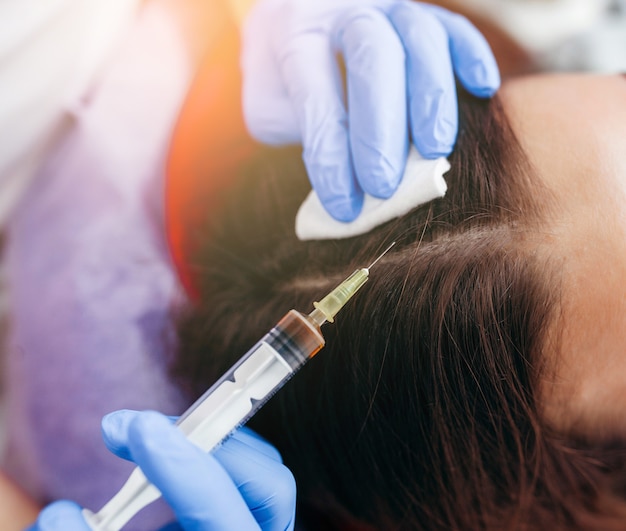
Is PRP Safe? Are There Risks?
PRP is one of the safest hair treatments available. Since it uses your blood, the risk of complications is minimal. As with any procedure, there’s always a slight chance of minor side effects, like bruising or swelling at the injection sites, but these usually go away quickly. Overall, PRP is a very safe and effective option for most people.
Who Is a Good Candidate for PRP Treatment?
PRP works best for people in the early to moderate stages of hair loss. If your hair follicles are still active, you’re a good candidate for PRP. If your hair loss is more severe, consider exploring other options, like hair transplants.
The treatment is also effective for both men and women, so no matter your age or gender, PRP can help stimulate hair growth.
Conclusion: Is PRP the Right Choice for You?
If you’re tired of watching your hair thin and are looking for a safe, non-invasive, and natural treatment, PRP could be your best bet. It’s affordable, effective, and doesn’t require any surgery. While it may not be the right choice for everyone, it’s definitely worth considering if you want to stop hair loss in its tracks and start seeing actual results.
If you’re ready to give PRP a shot, make sure to consult with an expert—Dr. Taskeen Iqbal offers the best PRP hair treatments in Islamabad, Pakistan. Reach out today to schedule a consultation and get started on your hair restoration journey!
FAQs
What is better than PRP for hair loss?
PRP is effective for many, but some might opt for hair transplants if their hair loss is more advanced. Additionally, treatments like GFC (Growth Factor Concentrate) may also offer promising results. For personalized advice, Dr. Taskeen Iqbal can help determine the best approach for your hair restoration.
Which one is better, GFC or PRP?
GFC is a newer treatment that uses a concentrated form of growth factors and may provide faster results. However, PRP is well-established and highly effective for many. Dr. Taskeen Iqbal can guide you through these options to find the right one for your needs.
Which treatment is better than PRP?
While PRP is an excellent choice for many, hair transplants offer a permanent solution for severe hair loss. Your specific situation may determine the best choice, and Dr. Taskeen Iqbal can help you explore all your options.
What are the two types of PRP?
The two types of PRP are Pure PRP and Leukocyte-Rich PRP. The difference lies in the presence of white blood cells, which can affect the healing process. Dr. Taskeen Iqbal can help explain which type is most suitable for your hair restoration goals.
Are there different qualities of PRP?
Yes, PRP can vary in quality depending on the preparation method and the concentration of platelets. Higher-quality PRP is more effective at stimulating hair growth. Dr. Taskeen Iqbal ensures the highest quality PRP for your treatment.
Are all PRP hair treatments the same?
Not all PRP treatments are identical. The technique and equipment used can influence the results. Dr. Taskeen Iqbal specializes in customized PRP treatments tailored to your hair restoration needs, ensuring the best outcome.
PRP is effective for many, but some might opt for hair transplants if their hair loss is more advanced. Additionally, treatments like GFC (Growth Factor Concentrate) may also offer promising results. For personalized advice, Dr. Taskeen Iqbal can help determine the best approach for your hair restoration.
GFC is a newer treatment that uses a concentrated form of growth factors and may provide faster results. However, PRP is well-established and highly effective for many. Dr. Taskeen Iqbal can guide you through these options to find the right one for your needs.
While PRP is an excellent choice for many, hair transplants offer a permanent solution for severe hair loss. Your specific situation may determine the best choice, and Dr. Taskeen Iqbal can help you explore all your options.
The two types of PRP are Pure PRP and Leukocyte-Rich PRP. The difference lies in the presence of white blood cells, which can affect the healing process. Dr. Taskeen Iqbal can help explain which type is most suitable for your hair restoration goals.
Yes, PRP can vary in quality depending on the preparation method and the concentration of platelets. Higher-quality PRP is more effective at stimulating hair growth. Dr. Taskeen Iqbal ensures the highest quality PRP for your treatment.
Not all PRP treatments are identical. The technique and equipment used can influence the results. Dr. Taskeen Iqbal specializes in customized PRP treatments tailored to your hair restoration needs, ensuring the best outcome.

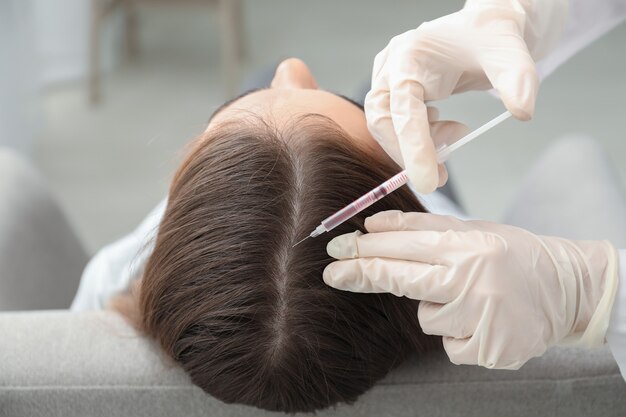
Leave a Reply